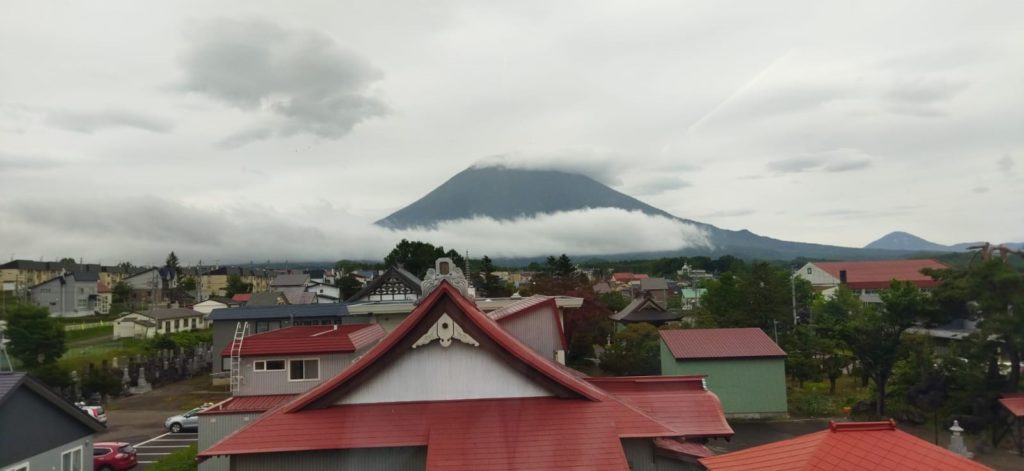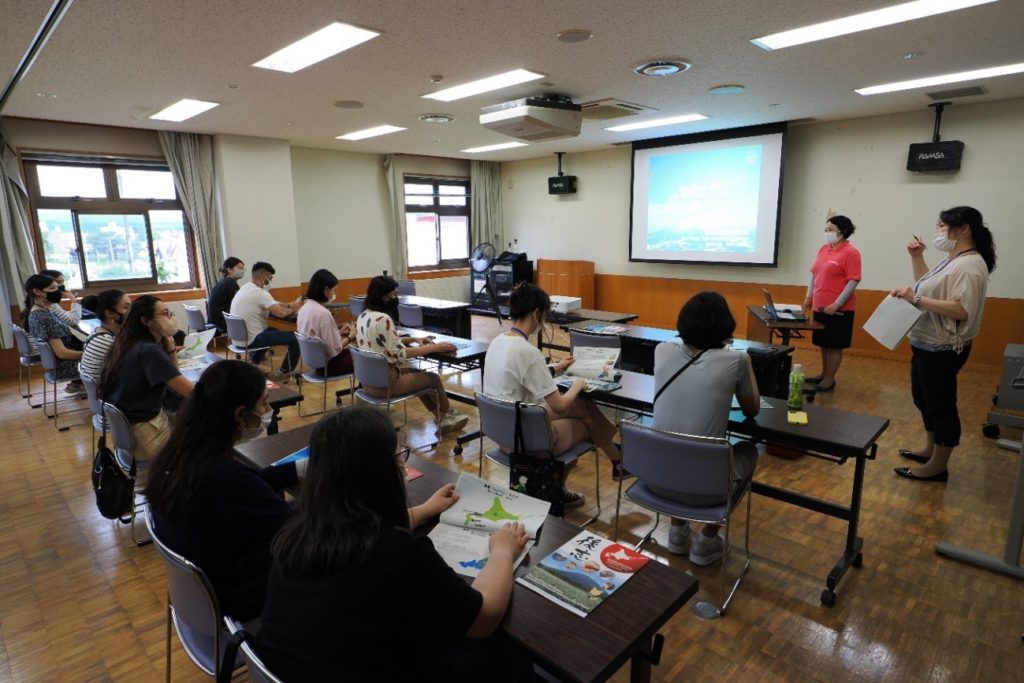Mukhamejanova Aizhan
Hokkaido is Japan’s northmost island and is renowned for its unspoiled natural beauty, world-class ski slopes, delicious seafood, and unique indigenous culture. Also, the island is the homeland of the Ainu, indigenous people of Japan who have been here for thousands of years.
In the winter, the plentiful fluffy snow makes Hokkaido a popular destination for skiing and snowboarding. In the summer, Hokkaido’s pristine forests are transformed into endless green fields of flowers – a spectacular sight that is a true delight to the senses. And exactly that period we had a chance to travel to the prefecture.
As a SPJES student, I had an amazing opportunity to visit Hokkaido and learn about its culture and natural wonders. One of the highlights of the trip was a visit to the Shiribeshi General Sub-prefectural Bureau. In this article, I will discuss my visit and reflect on what I learned from the experience.
First, let’s take a look at the general area of the sub-prefecture. The Shiribeshi General Sub-prefectural Bureau is located about an hour west of Sapporo city in the Shiribeshi district. Shiribeshi is a subprefecture of Hokkaido prefecture, with the capital city of Kutchan, located next to Mount Yotei. The primary industries of the site are agriculture, forestry, fishery, and tourism. The area is known to produce a variety of vegetables such as cabbages, potatoes, and cherry tomatoes as well as fruits like grapes and cherries. The region experiences mild winters with powder snow and cool summers, making it an ideal place for outdoor activities such as camping and skiing. Also nearby are various national parks that provide wonderful hiking opportunities and a scenic view of some of Hokkaido’s most beautiful landscapes.

Mount Yotei
Ms Ishii, the representative of the Bureau, gave us a presentation about the Shiribeshi area and spoke about the importance of maintaining a balanced relationship between the community and the environment. It was a very interesting and informative meeting that gave us the opportunity to learn more about the region and discuss some of the issues faced by the local communities. The local ski resorts, such as Grand Hirafu resort, Niseko Village, and Hanazono Niseko Japan, draw the attention of tourists from many countries including Australia, China, Hong Kong, and the USA. 90% of the region’s income comes from tourism during the high season. Unfortunately, starting from 2020 the number of tourists plummeted down because of the COVID-19 pandemic.

Presentation by Ms Ishii, Regional Policy Division, Shiribeshi General Sub-prefectural Bureau
According to the presentation of Ms Ishii, the total population of the Shiribeshi region is estimated at 198 078 people. There is a population loss of 14% over the past 10 years. This is explained by the lack of permanent work due to the climate and seasonal work. For this reason, people prefer to go to big cities like Sapporo. The regional government is trying to find a solution to this problem. Climate and climate-related factors have a key role in shaping the lives of the people in the Shiribeshi region.
The following issues were raised at the meeting: there is a need for skilled workers in the area as well as an increase in tourism to enhance job opportunities.
The lack of English-speaking personnel for the ever-increasing number of foreign tourists is one of the dilemmas in the local tourism industry. Due to the lack of English-speaking employees in the Shiribeshi region, tourists have difficulty communicating with locals when they visit. During the meeting we were discussing the ways to solve the problem, the possibility of the government finding ways to make English classes more affordable for local companies and also considering hiring foreign English teachers to help train the locals. I would also like to see improved hospitality training for people who work in tourist-related businesses such as hotels and restaurants.
The main problem with hiring workers is the fact that there is a decline in tourism during the summer months. This makes hiring much more difficult as there are fewer opportunities in the region during this time of the year. The seasonal nature of the tourism industry makes it very difficult to provide full work for residents.
The exodus of young human resources is also one of the problems that need to be addressed in the area.
The Shiribeshi sub-prefectural Bureau is planning to solve the mentioned problems by attracting foreign workers by working holiday visas. Developing summer activities, such as rafting, mountain biking, and trail running, is one of the solutions to get tourists interested in the area all year. Encouraging young people to stay in the area by offering them jobs in local businesses is also very important. Furthermore, Shiribeshi Internship Program has been implemented to attract more international students to the prefecture and promote international exchange. This initiative has resulted in many young individuals coming to Shiribeshi to gain experience in various fields through the program, except in 2022 when the internship was held online because of the Covid-19 pandemic. The programs for 2020 and 2021 were cancelled for the same reason.
The internship program is open to people of all nationalities who want to gain experience in different areas of tourism and hospitality management as well as in business communication. I found this program to be extremely useful and I am going to share the information with my friends and colleagues to want to expand their knowledge not only about tourism but as well as Japanese culture.
Tourism is the foundation of the local economy in Shiribeshi, and the sub-prefectural bureau is working very hard to promote it even more so that residents have more opportunities to find work throughout the year. Furthermore, finding solutions to the problem of youth migration will help the prefecture to maintain its population and economic vitality in the long term.
To sum up, there are ways to overcome the current issues raised in Shiribeshi and I believe that the government working together with the local people will make this possible. I would like to see a brighter future for the Shiribeshi region to develop this prefecture so that it can become one of the most visited regions in Japan in the future. I am looking forward to visiting Hokkaido in winter and trying some winter sports there. I thoroughly enjoyed my time there and found the scenery and people to be quite fascinating.



